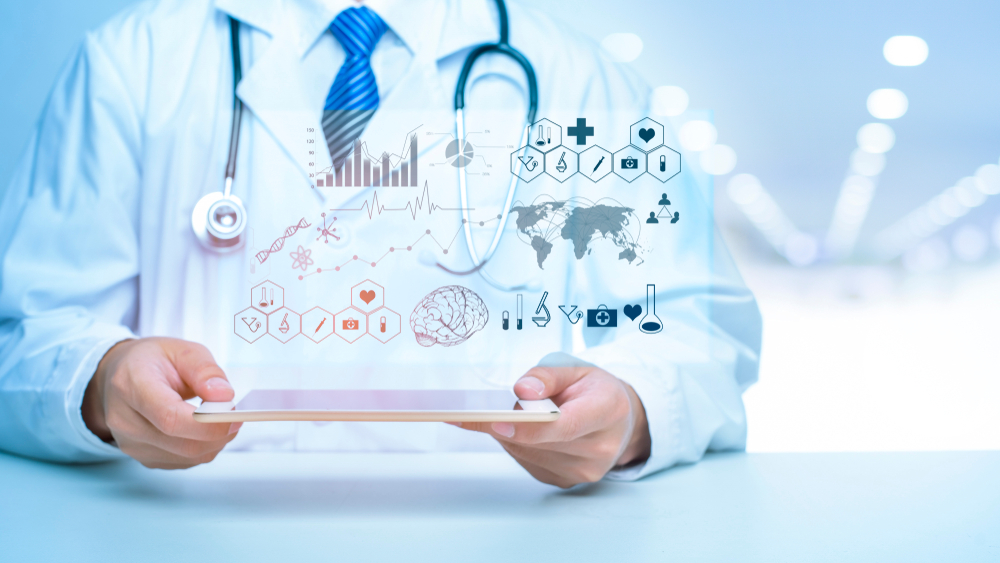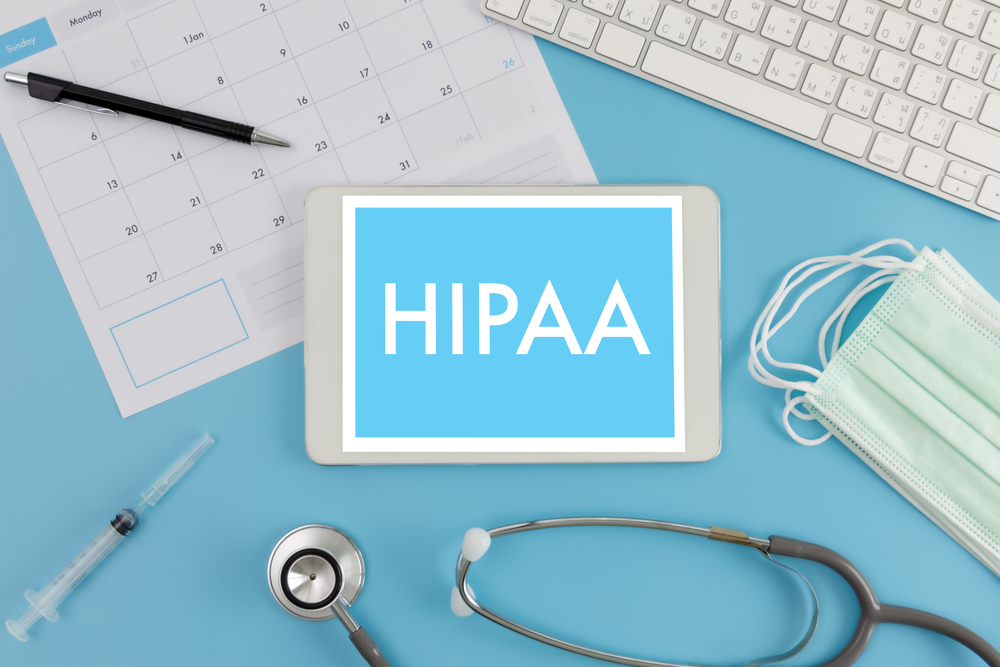Healthcare and Interoperability
What is EHR (Electronic Health Record) in Healthcare?
Request A QuoteStart Faxing Now
Electronic Health Records (EHR) have transformed the healthcare landscape by moving patient information from paper charts to a digital format.
What is EHR?
An EHR, or Electronic Health Record, is a comprehensive digital version of a patient’s medical history, including essential data like medical history, diagnoses, medications, and treatment plans. EHR systems enable healthcare providers to access, share, and update patient information seamlessly across various platforms, enhancing healthcare quality and efficiency.
Despite technological advances, many providers still use traditional communication methods, especially faxing—with federal estimates indicating that around 70% of healthcare providers still use fax as a primary communication tool. This practice, particularly prevalent in nursing and skilled nursing facilities, often leads to additional costs, delays, and limited access to critical patient information. EHR systems with integrated tools, such as Clarity Clinical Documentation™ (Clarity CD), automate and streamline fax processes, allowing faxes to be directed to appropriate patient records in the EHR, optimizing workflow and enhancing accuracy.
How Does EHR Work?
Electronic Health Record (EHR) systems work by creating a centralized, secure digital platform for storing, managing, sharing, and accessing patient health information. These systems facilitate a seamless data flow among healthcare providers, improving continuity of care and reducing the reliance on paper records, which can be prone to errors and loss.
- Data Storage and Access: EHR systems store patient data digitally, allowing healthcare providers to access and update records in real-time. This secure access enables authorized personnel, such as doctors, nurses, and administrative staff, to retrieve accurate patient information during each interaction. Each update made to a patient’s record is synchronized across the healthcare system, ensuring consistency and up-to-date information.
- Automation and Accuracy with Tools like Clarity CD: Integration of automated tools, such as Clarity CD, enhances the workflow within EHRs, especially for fax management. By automating the fax processing and minimizing manual data entry, Clarity CD links faxed documents directly to patient records, reducing administrative workload and improving data accuracy.
- Enhanced Ordering and Decision Support: EHR systems incorporate key tools like Computerized Physician Order Entry (CPOE) and Clinical Decision Support (CDS):
- CPOE allows healthcare providers to order medications, lab tests, and procedures directly within the EHR, significantly reducing transcription errors and ensuring orders are standardized.
- CDS tools provide decision-making support by analyzing patient data against the latest medical research, helping providers make informed choices about treatments and diagnoses.
Together, these features optimize patient management by improving the efficiency of routine processes, supporting clinical decisions, and enhancing the overall quality of care provided.
What Are the Components of EHR?
Electronic Health Record (EHR) systems integrate multiple key components to provide a complete, accessible view of a patient’s health. These core components include:
- Patient Medical History: EHRs record comprehensive details about a patient’s past and present medical conditions, allergies, surgeries, and family history. This background information helps providers quickly understand the patient’s health context for informed decision-making.
- Diagnoses and Problem Lists: EHRs document current and past diagnoses, which are critical for tracking chronic conditions and guiding ongoing treatment plans.
- Medications: Up-to-date records of all prescribed and previously taken medications ensure safe prescribing practices, preventing adverse drug interactions or duplicate prescriptions.
- Treatment Plans: Providers document recommended treatments, procedures, and follow-up care, allowing all involved healthcare professionals to follow a unified care approach.
- Laboratory and Test Results: EHRs centralize lab results, imaging studies, and diagnostic tests, providing providers with access to historical and current results for trend analysis and accurate diagnoses.
- ePrescribing: This feature allows providers to send prescriptions directly to pharmacies, reducing errors from handwritten prescriptions and improving medication management.
- Care Coordination and Communication Tools: EHR systems facilitate seamless communication between multiple healthcare providers, ensuring continuity of care. This is particularly important for patients with complex conditions requiring input from different specialists.
- Secure Data Storage and Accessibility: EHRs store patient information in a secure, digital format that complies with data protection standards. Authorized healthcare providers can access the system in real-time, from various locations, enhancing collaborative care and response time.
These components enable EHR systems to streamline patient data management, enhance provider collaboration, and improve patient safety, ultimately contributing to a higher standard of healthcare delivery.
How Is EHR Different from EMR (Electronic Medical Record)?
The primary difference between Electronic Health Records (EHR) and Electronic Medical Records (EMR) lies in their scope and interoperability:
- Interoperability and Data Sharing:
- EHR Systems are designed to be interoperable, allowing for the secure exchange of patient data across different healthcare providers and systems. This interoperability ensures that patient information can be shared seamlessly, supporting coordinated care among various specialists, hospitals, and practices.
- EMR Systems, on the other hand, are typically used within a single healthcare practice or organization. They primarily support internal record-keeping without the capability for broad data sharing. This limitation can restrict collaborative care, particularly when patients require treatment from multiple providers.
- Comprehensive Patient Care:
- EHRs provide a more holistic view of a patient’s health, capturing data across visits and healthcare providers. They include medical history, test results, medications, treatment plans, and more, offering a consolidated and current view accessible by multiple providers.
- EMRs focus on medical records for a single practice or visit history, often containing information like diagnoses and treatments specific to that practice. They are less comprehensive, as they are not intended to provide a cross-provider patient view.
- Data Portability:
- EHRs allow for data portability, enabling the secure transfer of patient information between different healthcare systems. This portability helps patients transition smoothly between providers, ensuring continuity of care and minimizing the need for duplicate tests or redundant medical histories.
- EMRs generally lack this portability, making them more static and bound to a specific provider. Patients often must manually transfer information if they seek care outside the practice that maintains their EMR.
In summary, while both EHR and EMR systems digitally store patient information, EHRs are built for interoperability and comprehensive care, supporting a collaborative healthcare environment. EMRs remain localized, focusing on individual practices without the data-sharing capabilities of EHRs.
What are the Benefits of EHR?
Electronic Health Records (EHR) offer numerous advantages that enhance patient care, streamline operations, improve communication, and secure sensitive data. Here are the primary benefits:
- Improved Patient Care
- Comprehensive Health Tracking: EHRs allow healthcare providers to track, diagnose, and monitor patient health more effectively. They consolidate information like medical history, lab results, and treatment plans, enabling a holistic view of patient care.
- Empowered Patients: With patient portals, EHRs provide patients direct access to their health data, promoting active engagement and informed decision-making.
- Real-time Access for Clinicians: Providers benefit from real-time updates on patient status, reducing the likelihood of errors associated with outdated information. Tools like Clarity CD further enhance this by ensuring faxed patient information is processed quickly and accurately, supporting timely clinical decisions.
- Support for Chronic and Population Health Management: EHRs help monitor and manage chronic conditions and larger patient populations, facilitating better long-term care and reducing complications.
- Increased Efficiency
- Automation and Workflow Optimization: EHRs automate data entry and updates, freeing up clinicians’ time from administrative tasks and enabling a more patient-focused approach. This automation helps reduce errors, quickens workflows, and enhances operational efficiency across healthcare settings.
- Integration with AI: Many EHRs incorporate artificial intelligence to further streamline processes, such as linking faxed documents to patient records without manual intervention, thus enhancing provider productivity.
- Better Communication and Coordination
- Seamless Inter-provider Communication: EHR systems enhance collaboration by enabling different healthcare providers to access and share patient data easily, reducing the chance of miscommunication.
- Enhanced Document Handling with Clarity CD: By automatically routing and linking faxed documents to patient files, Clarity CD minimizes the risk of misplaced information and promotes smooth inter-departmental communication.
- Interoperability with Health Information Exchanges (HIE): EHRs integrate with HIEs to enable the secure exchange of patient data across various healthcare systems, which is crucial for continuity of care, especially for patients seeing multiple providers.
- Enhanced Data Security
- Regulatory Compliance: EHR systems adhere to rigorous security regulations, such as HIPAA, ensuring that patient data remains confidential and secure.
- Advanced Security Features: EHRs use tools like encryption, audit trails, and automatic updates to protect sensitive information against unauthorized access.
- Spam Management with Clarity CD: Clarity CD adds an extra layer of security by routing non-medical faxes to a designated portal, preventing spam or irrelevant faxes from cluttering patient records.
Summary: EHR systems improve patient care through better tracking and real-time access, boost organizational efficiency via automation, support effective communication between healthcare teams, and provide robust data security. These benefits ultimately enhance the quality, coordination, and security of patient care in healthcare settings.
What are the Challenges of Implementing EHR?
Implementing Electronic Health Records (EHR) presents various challenges that healthcare organizations must address to ensure successful adoption and effective use. Key challenges include:
- Cost
- High Initial and Maintenance Costs: Implementing an EHR system can be financially prohibitive, especially for smaller practices. Costs include not only the initial investment in software and hardware but also ongoing expenses for updates, technical support, and system maintenance.
- Financial Strain on Budgets: Healthcare organizations often face budget constraints that limit their capacity to invest in and sustain robust EHR systems. Ongoing costs for training, technical support, and periodic upgrades further complicate financial planning.
- Incentive Programs: To mitigate these costs, programs such as the Medicare and Medicaid EHR Incentive Programs offer financial support to encourage EHR adoption among providers.
- Training and User Adoption
- Steep Learning Curve: Effective use of EHR systems requires comprehensive training. The learning curve can be especially challenging for healthcare staff who may be less comfortable with digital tools, particularly older staff members.
- Resistance to Change: Shifting from paper-based systems to digital records can meet resistance, slowing down the adoption process. Comprehensive training and support can help address these challenges by easing staff into the system’s functionalities.
- Importance of User Experience Design: Well-designed user interfaces can make EHR systems easier to navigate, helping to reduce errors and promote user adoption. The design and usability of EHR systems are crucial in minimizing frustration and ensuring that staff can use the system effectively.
- Interoperability
- Integration Across Platforms: EHR interoperability is vital for ensuring seamless data exchange across different healthcare providers, but achieving it remains a challenge. Established standards like FHIR (Fast Healthcare Interoperability Resources) and HL7 aim to facilitate this exchange, but variations in implementation can create technical barriers.
- Certification and Standards: The Office of the National Coordinator for Health IT (ONC) certifies EHR systems that meet interoperability standards, supporting data compatibility across platforms. However, aligning various systems to work together can still be complex and time-consuming.
- Privacy and Security Concerns
- Data Protection and HIPAA Compliance: Ensuring patient data privacy is essential, as EHRs contain highly sensitive information. Compliance with HIPAA regulations is mandatory to prevent data breaches and unauthorized access.
- Maintaining Data Integrity: EHRs must safeguard the accuracy of patient data. Data integrity is vital for making informed decisions, so healthcare providers must regularly monitor and protect data within the system to prevent errors or breaches.
In summary, while EHRs offer significant benefits, challenges such as high costs, training demands, interoperability issues, and privacy concerns need to be strategically managed to ensure a smooth and effective implementation.
What Are the Laws and Regulations Surrounding EHR?
The regulatory framework for Electronic Health Records (EHR) establishes essential standards to protect patient data, ensure privacy, and uphold the integrity of healthcare practices. Key laws and regulations include:
- Health Insurance Portability and Accountability Act (HIPAA)
- Data Privacy and Security Standards: HIPAA sets strict guidelines for the privacy and security of patient health information in the United States. It mandates that healthcare providers and EHR systems implement safeguards, such as data encryption, access controls, and audit trails, to protect patient information.
- Compliance Requirements: EHR systems must be HIPAA-compliant to prevent unauthorized access, use, or disclosure of patient data, reducing the risk of breaches and penalties.
- General Data Protection Regulation (GDPR)
- Data Protection for EU Citizens: GDPR, which applies to organizations handling the data of EU citizens, establishes comprehensive guidelines for data privacy and protection. EHR systems used by organizations treating EU patients must comply with GDPR’s strict standards, including obtaining patient consent and ensuring data portability.
- Right to Access and Erasure: GDPR grants patients the right to access their personal health data and request erasure, meaning EHR systems must have capabilities to honor these requests.
- Health Information Technology for Economic and Clinical Health (HITECH) Act
- Promotion of EHR Adoption: The HITECH Act incentivizes healthcare providers in the U.S. to adopt and meaningfully use EHR systems through financial rewards. It also strengthens HIPAA by introducing stricter data security measures and requiring healthcare providers to report data breaches.
- Breach Notification Requirements: Under HITECH, healthcare providers must notify affected individuals and the Department of Health and Human Services (HHS) in the event of a significant data breach, ensuring transparency and accountability.
- Centers for Medicare & Medicaid Services (CMS) Interoperability and Patient Access Rule
- Enhanced Data Access: This rule mandates that healthcare providers and payers participating in Medicare and Medicaid programs offer patients easy access to their health data. EHR systems must ensure interoperability to meet this requirement, enabling the secure exchange of information across healthcare networks.
- Role of Health Information Management (HIM)
- Data Compliance and Governance: HIM professionals are responsible for overseeing the compliance of EHR systems with these regulations. They play a crucial role in data governance by implementing policies that protect patient information, ensuring data accuracy, and supporting overall healthcare quality.
- Ongoing Monitoring: HIM teams routinely monitor EHR systems to verify compliance with evolving regulations and perform audits to assess data protection practices.
Summary: Compliance with laws like HIPAA, GDPR, and the HITECH Act is essential for safeguarding patient information within EHR systems. Together, these regulations ensure data privacy, promote secure information sharing, and support healthcare organizations in maintaining trustworthy and compliant EHR practices.
How Is Patient Data Protected in EHR?
To safeguard sensitive health information, Electronic Health Record (EHR) systems employ a range of protective measures that secure data and ensure compliance with privacy regulations. Key security measures include:
- Secure Digital Storage and Access Control
- Data Encryption: EHR systems use data encryption to protect patient information both at rest and in transit, ensuring that only authorized individuals can access and interpret the data.
- Access Controls and Authentication: Multi-factor authentication and role-based access controls restrict access to sensitive patient records, allowing only qualified healthcare providers to view and modify information.
- Automated Security Updates and Software Patching
- Routine Security Updates: Regular updates and patches are implemented to address vulnerabilities, protecting the system from cyber threats and maintaining compliance with evolving security standards.
- Intrusion Detection and Prevention Systems (IDPS): Many EHR systems incorporate IDPS to monitor network traffic and detect potential breaches in real-time, reducing the likelihood of unauthorized access.
- Audit Trails and Monitoring
- Access Logs and Audit Trails: EHRs track and log all access to patient records, creating a comprehensive audit trail that helps identify unauthorized access or suspicious activity. This capability is essential for regulatory compliance and ensuring accountability.
- Regular Security Audits: Security teams conduct periodic audits of EHR systems to evaluate compliance with policies and check for any potential security risks.
- Data Filtering with Integrated Solutions like Clarity CD
- Automated Document Validation: Clarity CD enhances data security by ensuring that only valid, relevant documents are processed and routed to the correct patient records, minimizing errors and preventing unauthorized information from entering the system.
- Spam and Non-medical Data Filtering: By filtering non-medical and spam documents, Clarity CD prevents irrelevant information from being stored in the EHR, enhancing the overall security and organization of patient data.
Impact of EHR Systems on Modern Healthcare
EHR systems represent a transformative advancement in healthcare technology by enhancing patient care, operational efficiency, and regulatory compliance. With ongoing security improvements and integrated solutions like Clarity CD, EHRs will continue to be essential for meeting the demands of modern healthcare, fostering a secure and efficient environment for both patients and providers.


















